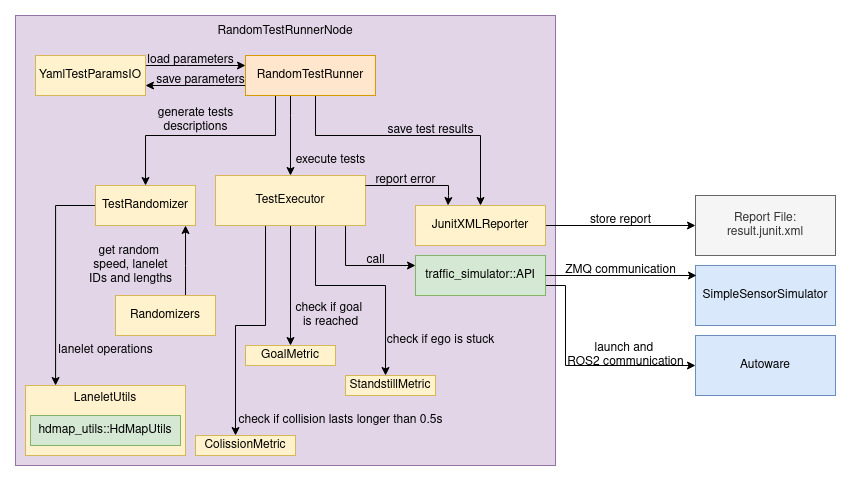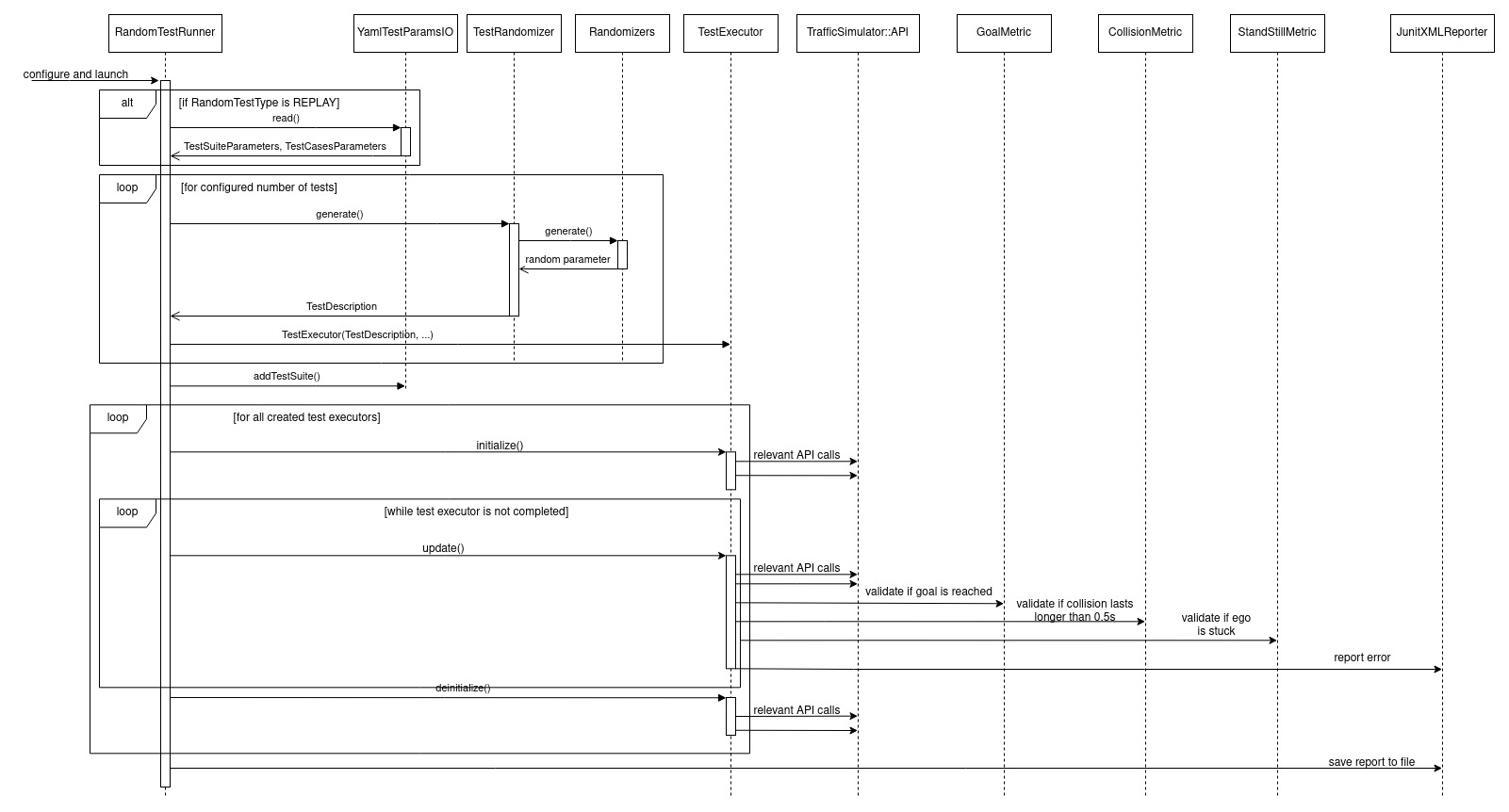Design#
This section describes the details of RandomTestRunner implementation and behavior.

Before the simulation starts, RandomTestRunner creates multiple TestExecutors for every test it needs to perform. In order to create TestExecutor runner uses TestRandomizer::generate method which returns TestDescription. The description includes information about ego start and goal position as well as the information about npcs. This generated test description is passed to the TestExecutor. The generation process is done separately for each test executor.
In order to generate the test parameters TestRandomizer uses multiple Randomizers. It also uses hdmap_utils::HdMapUtils to operate on lanelets information.
After the generation RandomTestRunner keeps the vector of test executors and inside RandomTestRunner::update method it initialize and update the executors sequentially.
During the test TestExecutor uses the object of JunitXmlReporter class to report the errors. More detailed information about the kinds of reported error can be found in Usage.
TestExecutor uses traffic_simulator::API to update the state of the simulation and validate the metrics. Executor finishes the test if the goal is reached, an unexpected standstill is detected or the scheduled time for the test has expired.
After all the tests are finished RandomTestRunner calls JUnitXMLReporter::write() and information reported during the test is saved to the report.junit.xml file inside configured directory. The directory can be specified as RandomTestRunner ROS 2 parameter. To see the detailed description of the result file please see Results.
To better visualize how this module works please find the sequence diagram below:
